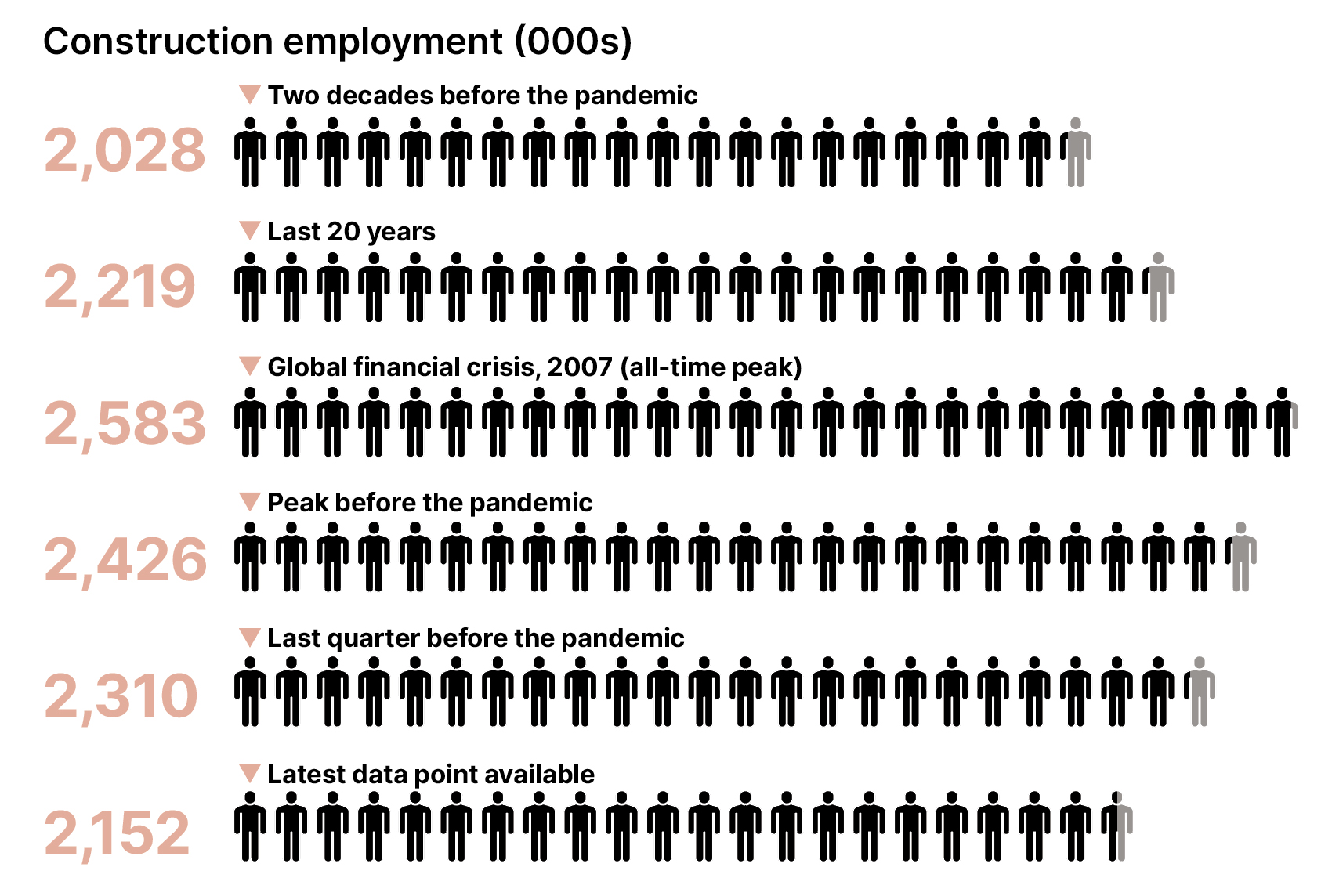
The skills crisis threatens to undermine construction’s strong productivity performance, warns Pablo Cristi Worm.
Given the level of innovation and excitement in construction, it can sometimes surprise insiders how difficult it is to attract new people to the sector. The industry is still perceived by many young people as low-tech, physically demanding manual labour with few opportunities for career development.
Challenging these assumptions is more important than ever amid a persistent skills shortage which threatens to undermine the productivity boom that the sector is enjoying. To secure an innovative and productive future for construction, we need to reposition its image.
Since the Covid outbreak, construction sector productivity, measured by output per hour worked, has turned a corner, growing by 9.9% – well on the way to reversing the 15.3% fall in the previous two decades. By contrast, productivity in the whole economy grew by 21.7% in 2019 but has since slowed to just 2.4% since 2020. By the middle of 2023, construction was the second largest contributor to the wider economy’s annual productivity growth.
This boom has been driven largely by the increase in output per hour worked, which rose by 3.7% on the year, despite a 0.7% decrease in the actual number of hours worked. In less time, workers were more productive, showing that despite a turbulent economic landscape and faltering investment levels, construction is doing more with less.
Addressing the skills shortage
Many sectors within construction, especially civil engineering and specialised construction activities, have benefited from strong pipelines of work fuelled by government schemes.
Setbacks such as the HS2 northern leg cancellation have been somewhat offset by other upcoming major programmes like the Northern Powerhouse Rail programme and Birmingham’s new Curzon Street station.

This has reassured businesses, which are then able to invest and innovate to boost productivity. However, despite this, one foundational element threatens the progress made: the skills shortage.
Construction is facing a severe loss of skilled workers due to retirement, particularly after the pandemic, and a shortage of new entrants. It is expected that about 500,000 workers, or around 25% of construction’s workforce, will retire in the next 10 to 15 years. If these are not replaced, the efficiency gains the sector has achieved will eventually be lost.
Importing labour from other countries can provide temporary relief but it is not a long-term solution. The more fundamental problem is the ageing workforce. Over 30% of the construction labour pool is 50 years or older, and the average age for workers is 45 years old.

Current efforts to address the recruitment crisis are not producing the desired results, and the number of young people enrolling in construction trainee programmes has now dropped to just a quarter from 2007 levels. Even though apprenticeship starts in construction are 8.3% higher than five years ago, the number dropped by 5.9% between the 2021 and 2022 financial years.
Revitalising construction’s image
It is essential that the sector reverses this trend and boosts both the number of ways into the industry and the attractiveness of construction as a whole.
To shake off old stereotypes, the sector must continue to digitalise and embrace the latest innovations. This stretches from AI and a wider adoption of digital tools to analyse data, to modern methods of construction and greater automation. This goes hand in hand with the need to foster new talent and bring in those with different skills equipped to operate these new technologies.
Sustainability is also a top priority for new entrants to the job market, and construction must demonstrate the huge strides made in this area and the vital role the sector is playing on the road to net zero. Productivity is at its core about people, and our industry’s future success rests on how we attract more of the next generation of apprentices, graduates and fresh thinkers.
Pablo Cristi Worm is a senior economist at Turner & Townsend.











